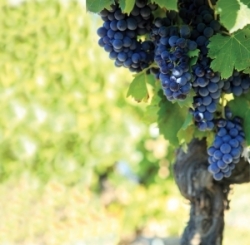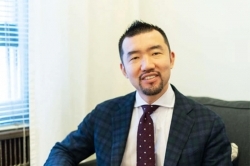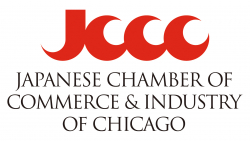お知らせ
News Release - New island in the Port Lands named Ookwemin Minising, place of black cherry trees
- [登録者]City of Toronto
- [言語]日本語
- [エリア]Toronto, Canada
- 登録日 : 2024/11/01
- 掲載日 : 2024/11/01
- 変更日 : 2024/11/01
- 総閲覧数 : 55 人
- お店を検索するなら『タウンガイド』
-
- 習い事始めてみませんか?資格取得から趣味まで。理想のお稽古事、新しい人たちに出会...

-
オレンジカウンティー初の日系総合カルチャーサロンです。おかげさまで17周年、20種類の習い事の中からあなたの理想のお稽古見つかります。お友達作り、情報交換の場としてもご活用ください。時間でお部屋もレンタルできます。今できることを精一杯。全力で生きる。だから本当に大切な時間を有意義に使いましょう。心ときめく今、ラッキー、ハッピー、幸せナビゲーションのオレンジアイランドカルチャーサロンはあなたをいつも...
+1 (949) 685-7120Orange Island Culture Salon
-
- 東京湾が一望できるリゾート施設『BAYSIDE KANAYA』新しい宿泊のカタチ...

-
グラマラス+コテージ=『グランコテージ』という新しい宿泊のカタチが体験できるBAYSIDE KANAYA。全室オーシャンビューで東京湾に沈む夕日を見ながら、バーベキューをしたり焚火エリアで焼マシュマロを食べたりなかなか過ごせない癒しのひと時をお過ごしください✨
+81-439-27-1415BAYSIDE KANAYA ベイサイド金谷
-
- コスタメサとトーレンスで診療を行っています。ドクターとスタッフが全員日本人で、受...

-
お子様からご年配の方まで歯のことでお悩みがある方は、オレンジカウンティーで30年以上の経験を持つ、室谷歯科医院にお任せ下さい。日本人医師が日本語で丁寧に診察致します。一般歯科、虫歯予防、神経治療、小児歯科、インプラント、審美歯科、ホワイトニングなど、日本語でお気軽にご相談下さい。
+1 (714) 641-0681室谷歯科医院
-
- ロサンゼルス・オレンジカウンティにお住いの方を対象に、精神科・心療内科診療、お薬...

-
カリフォルニアには毎年多くの日本人の方がいらっしゃいますが、慣れない海外での生活は決して簡単ではありません。カリフォルニアにお住いの日本人の方の多くが文化や言葉の壁、生活習慣の違い、日本の家族や友人との離別、現地の学校や職場への不適応などの様々なストレスにさらされています。強いストレスは気づかないうちに様々なこころとからだの不調を引き起こします。ストレスとは万病のもととも言われます。こんな症状はあ...
+1 (201) 809-3508精神科・心療内科医 松木隆志
-
- <一般歯科/小児歯科/予防歯科/神経治療/審美治療> フォートリーで25年以上診...

-
歯のお悩みはお任せください!フォートリーで25年以上の診察経験を持つ私たちがいつまでも健康な歯でいられるようにサポートします✨ドクターは日本語で診察するので英語で症状を伝えるのが難しい方も安心🦷保険手続き代行いたします。お気軽に日本語でご相談ください。
+1 (201) 947-3777レモイン歯科
-
- シカゴ日本商工会議所は、シカゴ進出日系企業などを中心におよそ500件の会員により...

-
シカゴ日本商工会議所は、シカゴ進出日系企業などを中心におよそ500件の会員により構成される地域経済団体です。 シカゴと日本の相互理解を深めビジネス交流を促進するため、①会員サービス事業、②教育支援事業、③地域貢献事業を中心に事業活動を行っています。
+1 (312) 245-8344シカゴ日本商工会議所
-
- ミータリーボーイはステーキグリルのお店で、アラモアナショッピングセンター内のレス...

-
ミータリーボーイはステーキグリルのお店で、アラモアナショッピングセンター内のレストランである「肉太郎」 の派生店です。こだわりのリブロースステーキ、じっくり焼き上げたフリフリチキン、そしてハワイ産ベジタブルを使用したおつまみメニューなどをご提供しています。
+1 (808) 376-0435Meataly Boys
-
- ※サンママプレイグループでは只今、コロナウイルスの影響に伴い活動を休止しておりま...

-
興味のある方はお名前とお子様のお名前・年齢と共にご連絡下さい。
サンママプレイグループ
-
- 木更津市で訪問介護・高齢者向け住宅をお探しなら『訪問介護ヴィレッジ』24時間体制...

-
木更津市内で訪問介護や高齢者向け住宅を展開している『訪問介護ヴィレッジ』です。当社では定期巡回訪問介護やご利用されるお客様のご自宅に緊急時用の専用電話の設置や医療機関との連携などご利用されるお客様とそしてそのご家族にもご安心いただけるような様々なニーズに合わせたサポートを行っております。
+81-438-53-8942訪問介護 ヴィレッジ
-
- 日本語でお問い合わせください。 sales-ja@pacificguardi...

-
ご家族の将来的な財産形成のためのお手伝いいたします。知識もあり、丁寧で信頼のできる担当者が、あなたのライフスタイルに応じた、また、それぞれの必要性にあった商品のご選択のお手伝いをいたします。もちろん、ご契約は日本への帰国後もご継続いただけます。
+1 (888) 616-3780PACIFIC GUARDIAN LIFE INSURANCE COMPANY, LTD
-
- 精神科・心療内科医 松木隆志のシカゴオフィスへようこそ イリノイ州全域 (シカゴ...

-
イリノイ州にお住まいの日本人の方の多くが、言葉や文化の壁、日本の家族や友人との離別、狭い日本人社会内での人間関係の軋轢など、生活習慣の違い、様々なストレスにさらされています。慣れない海外での生活は決して簡単ではありません。気づかないうちに強いストレスにさらされる事で、様々なからだとこころの不調を引き起こします。ストレスとは万病のもととも言われています。薬のみに頼る治療ではなく、薬を用いない治療 (...
+1 (201) 809-3508精神科・心療内科医 松木隆志
-
- 中西部のお引越し、宅急便、ロジスティックはクロネコヤマトシカゴ支店にお任せくださ...

-
安心のクロネコヤマト「場所に届けるんじゃない。人に届けるんだ」
+1 (630) 521-9290米国 ヤマト運輸 シカゴ支店
-
- 千葉県君津市に新オープン!こっぺぱん専門店「PanNe(パンネ)」できたてのふわ...

-
主食にもおやつにも大活躍のこっぺぱんを発売中!おかずがきっしり詰まった具沢山のデリこっぺからデザート感覚で楽しめるスイーツこっぺ、なつかい揚げパンまで焼きたての豊富なメニュ-をご用意しております。定番メニューの他、期間限定のこっぺぱんも登場中♪水分量の黄金比率を守り、発酵、焼き方、熟成時間などをこだわった「ふわふわ」のこっぺぱんをぜひご賞味ください。
+81-439-73-3939PanNe パンネ
-
- カリフォルニア州における相続、エステート・プランニング、 プロベート、トラスト・...

-
メリット法律事務所は遺言書、信託(トラスト)、委任状、医療介護指示書、プロベート、財産管理、税法の分野を専門とします。Certified Specialist in Estate Planning, Trust & Probate Law by The State Bar of California
+1 (650) 867-7017Merritt Law
-
- クルマ売るなら買取満足度No.1を目指すBubka!へ!好評の無料出張査定をご利...

-
トーランスとコスタメサに拠点を置くクルマ買取専門店です。徹底的なコスト削減による高価買取が当社最大の強みです。愛車の価値が知りたい方、日本へのご帰国をひかえている方、お乗り換えを考えている方、ぜひ当社の無料出張査定をご利用ください!日本人によるきめ細かいサービスをお約束いたします!
+1 (424) 271-0838Bubka!

==========================================
News Release
November 1, 2024
New island in the Port Lands named Ookwemin Minising, place of black cherry trees
Today, Mayor Olivia Chow and Councillor Paula Fletcher (Toronto-Danforth) were joined by Elder Shelley Charles (Chippewas of Georgina Island First Nation) and members of an Indigenous Advisory Circle to announce the name of the new island that is being created in the Port Lands and its new park.
The announcement comes after a year-long engagement and consultation process where the City of Toronto turned over naming power to the Indigenous community as part of its commitment to reconciliation. Now, the Circle is returning names for both the new island and the new park as a gift, sharing their symbolic meaning and significance to the history of the lands.
Ookwemin Minising
The Circle chose Ookwemin Minising (pronounced Oh-kway-min Min-nih-sing) as the island’s name meaning “place of the black cherry trees” in Anishinaabemowin/Ojibwemowin. Alongside the new island name, the Circle also chose a name for the surrounding park, determined as Biidaasige Park (pronounced Bee-daw-sih-geh) meaning “sunlight shining towards us” in Anishinaabemowin/Ojibwemowin.
The City collaborated with LURA Consulting and MinoKamik Collective led by Elder Shelley Charles on an Indigenous engagement process to discover, reflect on and determine place names for the island and park.
This process included an Indigenous Advisory Circle comprised of Elders, Knowledge Keepers, language speakers, youth and community members, as well as broader engagement with First Nations, Inuit and Métis communities. The Circle met seven times this year, walking the land to discuss the area’s history, cultural values and stories to determine the names.
Two hundred years ago, the area now called the Port Lands, was one of the largest freshwater marshes on Lake Ontario. Elders in the Indigenous Advisory Circle recalled that this area had an abundance of Ookwemin “black cherry” trees that grew throughout the waterfront area.
The island’s name honours the natural history of the land, is grounded in a vision of environmental restoration and highlights the future care of Indigenous plant communities, emphasized through the native planting palettes and ecological design of the Port Lands Flood Protection project, and guided by Elder Shelley Charles and the MinoKamik Collective.
The Port Lands Flood Protection project is renaturalizing the mouth of the Don River. As a result, this new island is forming in the area, bounded by Lake Ontario, the Keating Channel and the new river mouth. Toronto City Council directed City staff to further engage with First Nations, Inuit, Métis and urban Indigenous communities and report back on a permanent name for the island in April 2024 at the Executive Committee meeting.
Biidaasige Park
The park’s name relates to the hopeful light of a new day shining on waterway restoration and reconciliation, and acknowledges the relationship between the earth, water, sun and moon as relatives and teachers. The name recognizes water awareness as central to the Port Lands Flood Protection project and creation of the renaturalized Don River, valley and park. Additionally, the name honours the Indigenous water walker movement, an Anishinaabe initiative led by Josephine Mandamin, that highlights the significance of water as essential to life.
Community engagement process
As acknowledged at the April Executive Committee meeting, the decision to hand over the power to name this place to Indigenous communities was both a symbolic and concrete step in turning words into actions that contribute to truth, justice, and reconciliation. This process demonstrates ways of shifting power and priorities with respect for Indigenous worldviews, ways of knowing, cultural protocols, ceremonies, self-determination and leadership.
More information on the April Executive Committee decision is available on the City’s website: https://secure.toronto.ca/council/#/committees/2468/2439.
This initiative builds on the City's engagement with First Nations, Inuit, Métis and urban Indigenous communities during 2022-2023 on the Next Phase of Waterfront Revitalization and on Waterfront Toronto's relationship with the Mississaugas of the Credit First Nation and other First Nations, Inuit and Métis communities engaged through the Port Lands Flood Protection project over the last five years.
More information on the Next Phase of Waterfront Revitalization is available on the City’s website: https://www.toronto.ca/city-government/planning-development/waterfront/current-projects/next-phase-of-waterfront-revitalization/.
Next steps
The names of the new island and surrounding park will be brought forward to Executive Committee on Tuesday, November 5, followed by Toronto City Council at its November meeting. The staff report on the names is available on the City’s website: https://secure.toronto.ca/council/#/committees/2468/24403.
A link to a video outlining the robust naming process in partnership with Indigenous communities is available on the City’s YouTube channel: https://www.youtube.com/watch?v=XH4Pp13Ko7A.
The City is committed to advancing truth, reconciliation and justice. More information about the 2022-2032 Reconciliation Action Plan is available on the City’s website: https://www.toronto.ca/city-government/accountability-operations-customer-service/long-term-vision-plans-and-strategies/reconciliation-action-plan/?t=1631109160.
Waterfront development and protection
The Port Lands is an area that extends southeast of Toronto's downtown core into Lake Ontario and includes more than 715 acres (290 hectares) of land along the waterfront.
Currently, 290 hectares of southeastern downtown – including parts of the Port Lands, South Riverdale, Leslieville and the East Harbour development site – are at risk of flooding from the Don River and can’t be revitalized until they are flood protected.
The Port Lands Flood Protection project is revitalizing 240 hectares of these lands by building a new river valley through the Port Lands and renaturalizing the mouth of the river, creating a new island on Toronto’s waterfront.
This project is part of the City’s ongoing waterfront development endeavours, currently North America’s largest waterfront urban redevelopment initiative, in collaboration with Waterfront Toronto and many other public and private sector entities.
Ookwemin Minising, the new island, will include a climate-positive, mixed-use community designed to house approximately 16,000 residents and 3,000 jobs. In the last two months the City and its partners have completed and opened two new park spaces, Bathurst Quay Common and Leslie Lookout Park, in addition to the opening of community and childcare centres and Love Park in 2023.
Quotes:
“Guided by the insight and wisdom of the Indigenous Advisory Circle convened to suggest a name, Ookwemin Minising honours the natural history of the land, a vision of environmental restoration and highlights a path to First Nations, Inuit and Métis community engagement and collaboration. The decision to hand over that naming power to Indigenous communities was both a symbolic and concrete step in turning words into actions that contribute to truth, justice and reconciliation.”
– Mayor Olivia Chow
“Today, the City will receive a new name for the new island which honours the enduring presence of Indigenous peoples on our waterfront. This beautiful name is a gift given to us through the work of the Indigenous Advisory Circle. We are grateful and honoured to receive it. This naming recognizes Toronto’s waterfront as an important part of the lives of Indigenous nations for many thousands of years. “
- Councillor Paula Fletcher (Toronto-Danforth)
“I couldn’t understand when [my father] said these are third and fourth generation trees as all the old ones were cut down. I cried as I couldn’t understand how people could cut down these tree beings. How did all those animals above and below the soil react to having the trees cut down? They went away. The muskrat and sturgeon left. People used to come to this shoreline to rejuvenate themselves and this was a corridor to all the lakes. Our footprints of our ancestors are here. When we think of this tree and how everyone wants to restore Indigenous plants, I can just imagine the conversation from other-than-human beings from land, water, air, insects, animals: it will be like seeing a long-lost friend!”
– Elder Shelley Charles
Toronto is home to more than three million people whose diversity and experiences make this great city Canada’s leading economic engine and one of the world’s most diverse and livable cities. As the fourth largest city in North America, Toronto is a global leader in technology, finance, film, music, culture, innovation and climate action and consistently places at the top of international rankings due to investments championed by its government, residents and businesses. For more information visit www.toronto.ca or follow us on X at x.com/cityoftoronto, on Instagram at www.instagram.com/cityofto or on Facebook at www.facebook.com/cityofto.
- 30 -
Media contact: Media Relations, media@toronto.ca
================================================================
You are receiving this email because you are subscribed to receive Toronto News Releases updates.
All City of Toronto news releases are also available on the City's website at www.toronto.ca/home/media-room/news-releases-media-advisories/ .
Do not reply to this email. If you believe that you have received this announcement in error, visit www.toronto.ca/home/social-media/e-updates/unsubscribe/ to be removed from the subscription list.